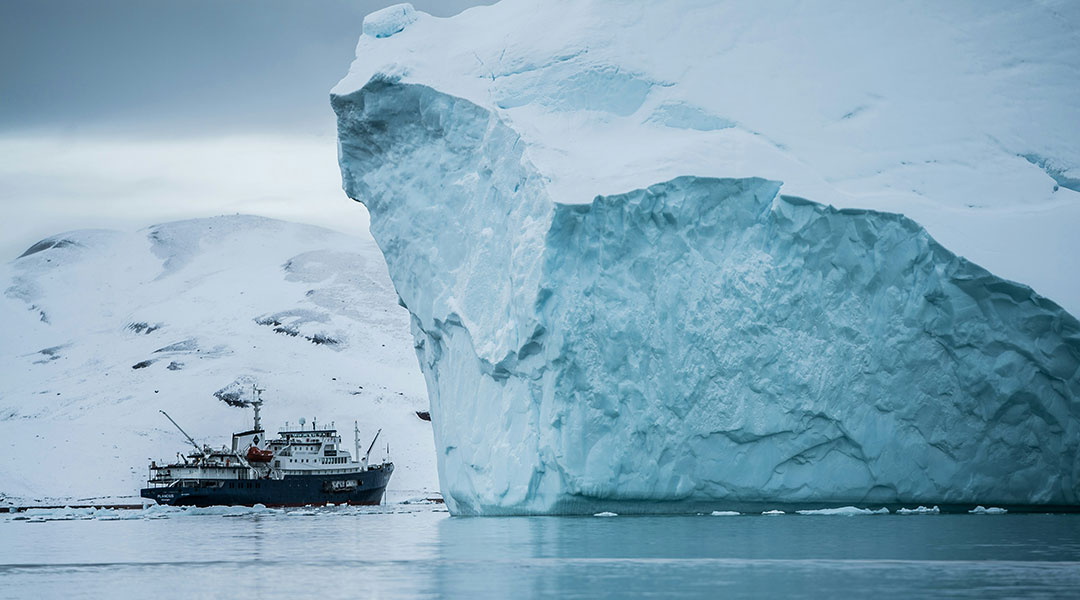On September 16, 2023, the Earth shook for nine days and no one could explain why.
Seismologists around the world detected the unusual and long-lasting vibrations of a very different pattern to the rumbles of earthquakes. Now, an international team of researchers have combined field recordings, satellite imagery, and mathematical modelling to find the cause.
The vibrations coursing through the planet were, in fact, caused by the mass movement of water in a remote Greenland fjord following a huge landslide.
“This is the first time that water sloshing has been recorded as vibrations through the Earth’s crust, travelling the world over and lasting several days,” said Stephen Hicks of UCL Earth Sciences in a press release.
The findings, published in the journal Science, used precise simulations to recreate the landslide and resulting tsunami. The team conclude that the landslide was triggered by the collapse of a glacier, thinned in recent years as a result of climate change.
Thankfully no people were injured, but the team stresses that this could be a warning signal of a growing risk in years to come.
A signal of change
If a mountain falls in a fjord, and nobody is there to see it, does it make a sound? Yes, according to the countless seismologists around the world who detected the mysterious vibrations last year.
“When I first saw the seismic signal, I was completely baffled,” said Hicks. “Even though we know seismometers can record a variety of sources happening on Earth’s surface, never before has such a long-lasting, globally travelling seismic wave, containing only a single frequency of oscillation, been recorded.”
Instead of the frequency-rich rumbles and pings associated with earthquake recordings, seismologists were receiving a single vibration frequency, like a monotonous hum.
Around the same time, news began to reach local authorities and researchers of a landslide and tsunami in Dickson Fjord, in a remote northeastern region of Greenland. The fjord is a common stop for cruise ships, though fortunately none were in the region that day.
The Danish military sailed into the fjord in the subsequent days to capture images and inspect the scarred mountain face as a first step in piecing together what happened — and what impacts it may have had.
“When we set out on this scientific adventure, everybody was puzzled and no one had the faintest idea what caused this signal,” said lead author Kristian Svennevig, from the Geological Survey of Denmark and Greenland. “All we knew was that it was somehow associated with the landslide. We only managed to solve this enigma through a huge interdisciplinary and international effort.”
By combining globally-sourced seismic recordings with local measurements and images, the 68 person-strong international team of scientists constructed a clear picture of what had happened.
A 1.2km-high mountain peak collapsed into the fjord, cause a backsplash of water 200 meters in the air and a wave up to 110 meters high. The team estimated that 25 million cubic meters of rock and ice crashed into the fjord (enough to fill 10,000 Olympic-sized swimming pools).
A mathematical model recreated the angle of the landslide and uniquely narrow fjord to show how the water movement continued for nine days, with much of the energy trapped within the reverberating system. The wave, extending across 10km of fjord, reduced to seven meters (about the height of a two-story building) within a few minutes and would have fallen to a few centimeters in the days after.
This is the first time a landslide and tsunami have been observed in eastern Greenland, though a similar event caused water to surge 90 meters up the sides of Karrat Fjord in western Greenland in 2017, devastating villages. The event was caused, the researchers write, by the collapse of a glacier at the foot of the mountain. It had thinned due to climate change and was no longer able to support the mass of material above it.
“Our study of this event amazingly highlights the intricate interconnections between climate change in the atmosphere, destabilization of glacier ice in the cryosphere, movements of water bodies in the hydrosphere, and Earth’s solid crust in the lithosphere,” said Hicks.
A growing threat
Glaciers play crucial structural roles along coastlines throughout the northern reaches of the planet. These forms, stable for decades, are thinning and weakening as climate change accelerates, raising the possibility that incidents like this could become more common. They won’t always be restricted to remote areas with little impact on people and their homes.
Therefore monitoring and investigating regions previously considered stable could be key to providing early warning of impending events, and analyzing this event has provided valuable information to push that cause forward.
“This unique tsunami challenged the classical numerical models that we previously used to simulate just a few hours of tsunami propagation,” said co-author Anne Mangeney, from Université Paris Cité, Institut de Physique du Globe de Paris. “We had to go to an unprecedentedly high numerical resolution to capture this long-duration event in Greenland. This opens up new avenues in the development of numerical methods for tsunami modelling.”
The increasing sophistication of monitoring and evaluation methods could be crucial going forward, and the study’s co-author, Thomas Forbriger from Karlsruhe Institute of Technology, said recent advancements in technology are already making a difference.
“We wouldn’t have discovered or been able to analyze this amazing event without networks of high-fidelity broadband seismic stations around the world, which are the only sensors that can truly capture such a unique signal,” he said.
This was a stunning natural phenomenon, an ideal subject for scientific interrogation with limited impacts on human life or structures. But the increased risk of events like this as the planet warms is just one more threat posed by climate change.
Reference: Kristian Svennevig, et al., A rockslide-generated tsunami in a Greenland fjord rang Earth for 9 days, Science (2024). DOI: 10.1126/science.adm9247
Feature image credit: Hubert Neufeld on Unsplash

















